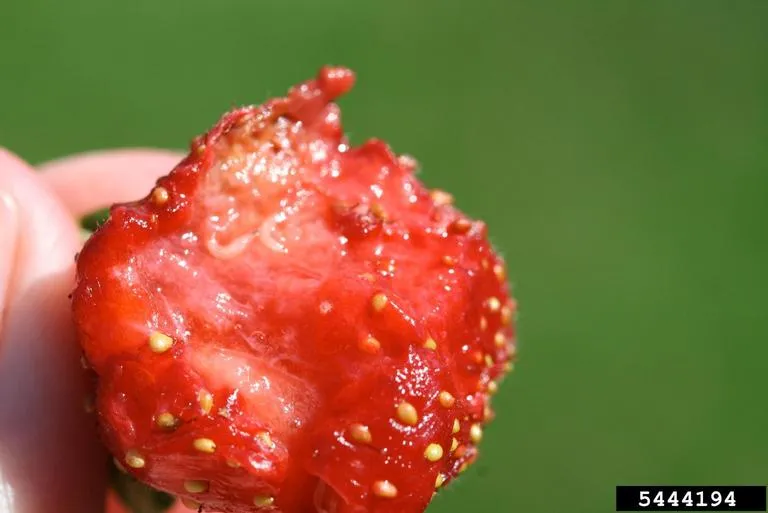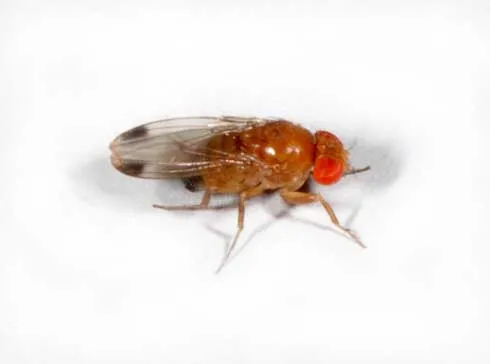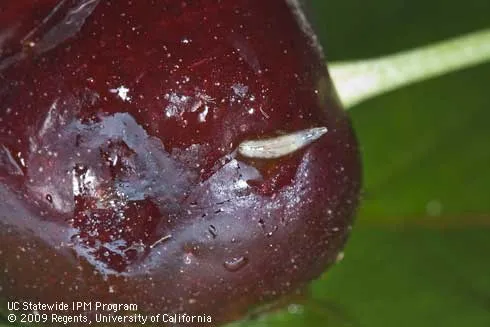Is That a Maggot in My Berry?

A little red-eyed fly is trending on social media for all the wrong reasons. Why? Because people are finding maggots in some of their berries! Sounds gross, but what is it?
This small fly, called spotted wing drosophila (SWD), love soft-skinned fruits such as cherries, blueberries, raspberries, blackberries, and strawberries. The adult fly looks a lot like the common fruit fly you might see around overripe fruit in the kitchen. But spotted wing drosophila is much more destructive. They attack your backyard fruit while it’s still ripening and undamaged. Here’s how to spot and manage it before your fruit harvest is ruined.
How to identify spotted wing drosophila:
- Adults have red eyes and a pale brown body about 1/16 to 1/8 inch (1.6 to 3 mm) long, and a black spot towards the tip of each wing.
- Larvae, called maggots, are small, white, and cylindrical shaped and are found in fruit.

Check your plants for:
- Prematurely rotting fruit, or areas of fruit flesh that turn brown and soft with sunken areas that leak fluid.
- Tiny puncture marks, called stings, on the fruit surface where the female laid her eggs. SWD stings are tiny, so a magnifying glass will help you see them.
- Larvae, called maggots, develop and feed inside the fruit. Break open suspect fruit to see if small, white larvae are inside.

Prevention and Management
A combination of preventive and cultural practices can be useful for reducing problems on fruit trees and berries.
- Throw away fruit that has fallen on the ground and any infested fruit remaining on plants in the garden. This can reduce populations of flies that might infest next year’s crops or later-ripening varieties.
- Place fine netting over whole plants or canes to keep flies from attacking fruit on blueberries and other small fruit.
- Harvest fruit early to reduce exposure of fruit to the pest. Begin harvest as early as you can and continue to remove fruit as soon as they ripen.
- Use traps to detect and monitor SWD adults. Stings are not readily visible on raspberries, blackberries, and strawberries, so it is difficult to detect an early infestation by monitoring the fruit for damage.
- If fruit is heavily infested, or if your home garden has persistent issues with SWD, consider contacting a pest control professional for a customized treatment plan.
If a small percentage of fruit is infested, you can salvage some of the crop by harvesting it immediately and sorting and removing fruit with stings on the surface.
Place infested fruit in a sturdy, sealed plastic bag and dispose of it in the trash. This prevents the maggots from completing their life cycle and spreading to healthy fruit. By checking fruit early and often, you can break the cycle and keep your garden harvest clean.
Fruit that may contain spotted wing drosophila eggs or larvae poses no known risk to human health and is safe to eat.
Learn more about managing spotted wing drosophila in the UC IPM Pest Notes: Spotted Wing Drosophila.

